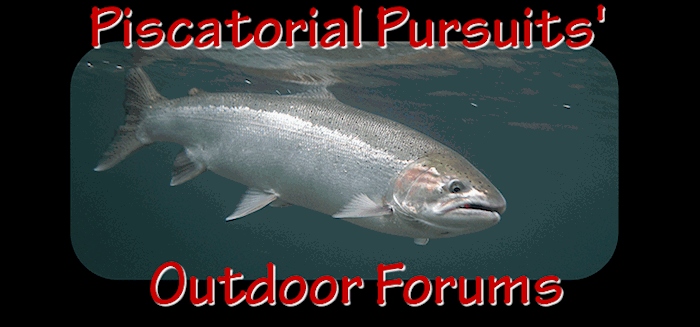Wit,
Apologies Corky, we seem to have thread drift here, but the issue is too important to leave.
Thanks Wit, but I hope it's understood that I'm not here to attack anyone, except politicians and other public officials who so deservedly bring it on themselves. Those of us on the BB are anglers all, so no personal attacks; just vigorous debate from time to time.
As for liberal/conservative, I think I was born leaning slightly to the right, or at least a moderate. However, it's these disgusting Republicans, like Slade, that make me vote for way too many Democrats!
The dams in question are Elwha and the four lower Snake dams. Few people are calling for the removal of others in WA state (except the one on Goldsborough Creek near Shelton that has been unused for years and is being removed by a number of cooperators). Elwha produces so little energy that BPA can't even see it on the grid. So its benefits are few and environmental impacts great; removal is the higher public interest.
The four lower Snake produce lots more energy and provides numerous benefits, so the decision to breach cannot be made lightly. The key to sound reasoning here is that there are viable alternatives to those benefits. Affordability of those alternatives is relative, depending on who you ask. But breaching causes no irretrevable committment of resources, except the money to do it. If the U.S. could ever afford it, now is that time.
And as for alternatives, there are no known alternatives to breaching for the salmon and steelhead. You ask about constructing free flowing streams around the dams. Basically, that's what breaching is. A portion of the earth fill section of each dam would be removed and stabilized, restoring a free flowing Snake River around the concrete dam sections. So restoring the dams at a later date, if society so determines best, remains a feasible alternative.
The reason a small free flowing stream around the dam doesn't work is that juvenile fish are by their very nature attracted to the dominant flow. That is the flow going through the turbines, and not the flow going over the spillways or surface collectors. Some fish take those routes, but the nature of most fish is to "go with the flow", and most flow goes thru the turbines.
Also, many smolts, particularly fall chinook, just stop migrating when they reach a slackwater reservoir. They think it's the ocean and stop migrating, so are lost to the population. I believe that if technology could have solved these problems, we'd see some answers in place by now.
The silt issue is real, but in relative terms of the problems the Snake and Columbia fish face, silt is a red herring. It can be measured in the reservoirs, and estimates made about how long and under what hydraulic conditions it would be moved downstream. Compared to other problems, like disease, water temperature, predation, and turbine mortality, silt just ain't on the radar screen.
And regarding private hatcheries for harvest, now that could be viable. That's sort of what the various regional aquaculture associations in Alaska do. And Weyerhauser tried it in Oregon in the mid 70s to early 80s. Basically, they didn't get enough fish back to make a profit due to harvests by the sport and commercial fishery off the Oregon coast.
Whew! Another lengthy diatribe by Salmo, I hope Bob doesn't start charging me by the line!
Sincerely,
Salmo g.















 Previous Topic
Previous Topic Index
Index


